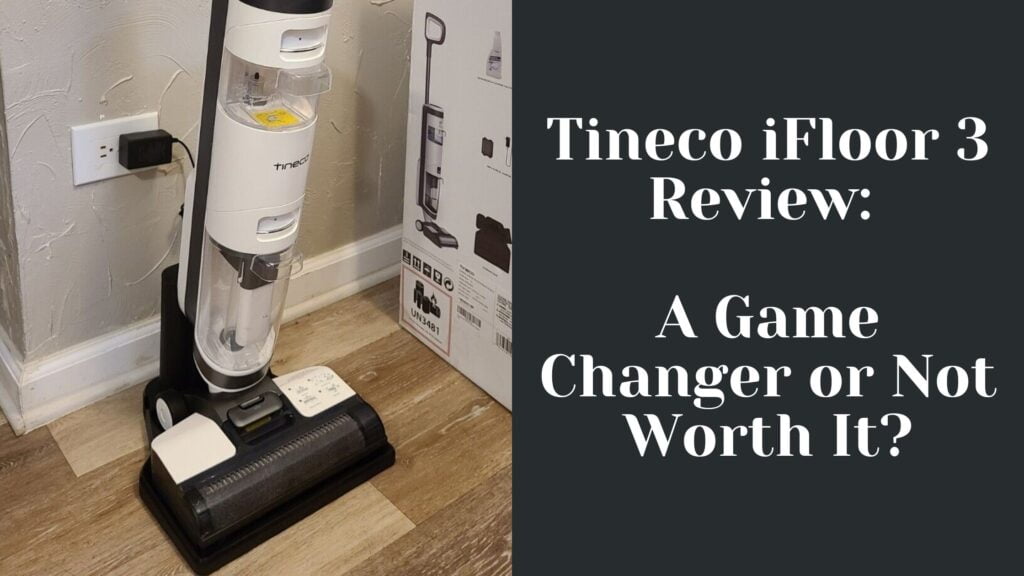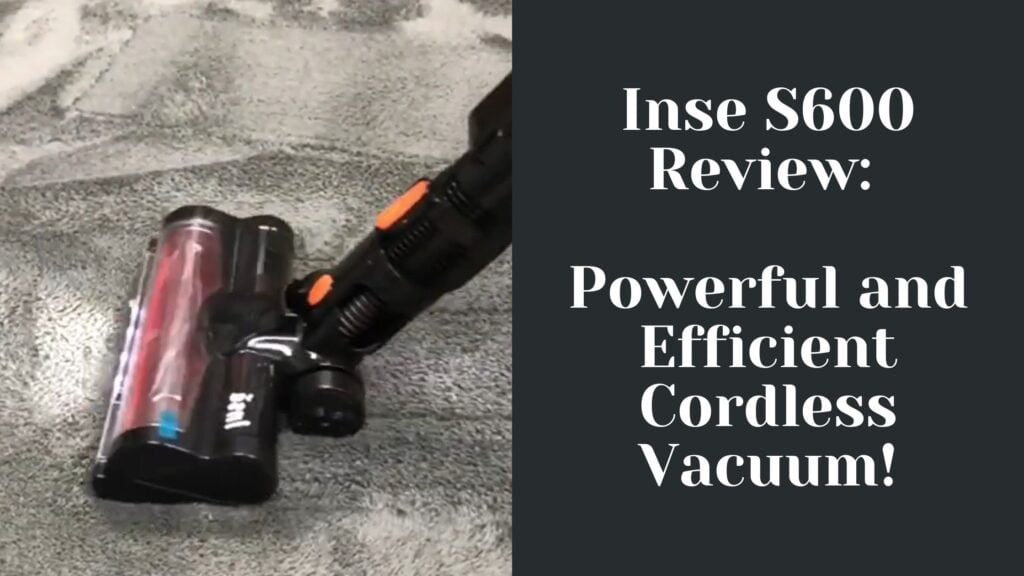In my experience testing various robotic vacuums, the Samsung POWERbot R7040 and iRobot Roomba 690 stand out as noteworthy contenders in the realm of automated home cleaning.
Both devices are designed to make household maintenance easier and are equipped with a range of sensors and smart features to navigate around your living space.
Comparing these two models reveals differences in their design approaches, cleaning capabilities, and integration with smart home systems.

The Samsung POWERbot R7040 is known for its powerful suction and intelligent navigation. It has a particular strength in handling various surfaces and is adept at mapping its cleaning path.
In contrast, the iRobot Roomba 690 may not boast the same level of suction strength but compensates with a user-friendly interface and compatibility with the iRobot HOME App, offering a balance between performance and convenience.
Deciding between the two ultimately depends on individual preferences and specific household needs. The choice may come down to factors such as the layout of one’s home, the types of surfaces to clean, and the desired level of smart home integration.
Both the POWERbot R7040 and Roomba 690 have their merits, and through my thorough analysis, potential buyers can determine which vacuum would best suit their lifestyle.
Key Takeaways
- The POWERbot R7040 excels in suction and navigation, while the Roomba 690 is more user-friendly.
- Smart home integration is a notable feature of both, but each offers different levels of compatibility and control.
- The decision between the two should consider home layout, surface types, and personal smart home requirements.
Design and Build Quality

In my assessment of the Samsung POWERbot R7040 and the iRobot Roomba 690, I’ve closely examined various aspects of their design and build quality. From handling both robots, I can attest to the forethought invested in their aesthetics, durability, and user-centric features.
Dimensions and Weight
The Samsung POWERbot R7040 stands out with a slight edge in slimness, making it easier to navigate under furniture. It measures approximately 13.7 inches in width and weighs around 8.8 pounds. On the other hand, the iRobot Roomba 690 comes in at a diameter of 13 inches and a weight of 7.8 pounds, which grants it impressive stability and maneuverability.
Aesthetics and Display
In terms of looks, both the POWERbot R7040 and the Roomba 690 maintain a sleek, modern design that blends into home settings. The POWERbot showcases a sophisticated graphite color, while the Roomba opts for a classic black and silver combination. Each model features a concise display, with the R7040 boasting a more prominent on-unit interface for quick monitoring.
Bin Capacity and Maintenance
The dustbin capacity is a critical aspect of vacuum performance. The Roomba 690’s bin can hold approximately 0.6 liters, which is adequate for routine cleaning without frequent emptying. The POWERbot R7040 has a slightly larger capacity, making it suitable for extended cleaning sessions. Moreover, both robots have washable bins and filters, making maintenance relatively straightforward.
Physical Characteristics
I noticed that the POWERbot R7040 is robust with a strong emphasis on a protective bumper, enhancing its durability. Its dimensions are thoughtfully considered to improve coverage. Conversely, the Roomba 690 displays a circular shape, optimized for efficient room navigation.
Innovations in Design
Each robot vacuum incorporates unique design features to tackle cleaning challenges. Samsung included an Edge Clean Master technology in the R7040, which helps in cleaning wall edges effectively. iRobot’s Roomba 690 uses a patented Dirt Detect technology that recognizes high-traffic areas and cleans them more thoroughly.
Special Features
For smart home integration, both vacuums can be connected to Wi-Fi, allowing them to be controlled via a smartphone app. They both support virtual walls and barriers—the Roomba 690 uses infra-red beacons, while the POWERbot R7040 utilizes magnetic boundary markers to guide or restrict the robot’s cleaning path.
Accessory Inclusion
Both models come with a range of accessories to facilitate their functions. For example, the Roomba 690 is equipped with a virtual wall beacon, a charging dock, and extra filters. The POWERbot R7040 also ships with a docking station and has the option of extra brushes for various floor types.
Mopping Functionality
Neither the Samsung POWERbot R7040 nor the iRobot Roomba 690 features built-in mopping functionality. They are specialized for vacuuming and do not offer an integrated wet mop feature which some other robot vacuum models might provide.
Technical Specifications

In my experience, both the Samsung POWERbot R7040 and the iRobot Roomba 690 showcase distinct technical features that cater to different cleaning needs. They’re equipped with technology that addresses various aspects of robotic vacuuming, from suction power to connectivity.
Suction and Cleaning Modes
Samsung POWERbot R7040: Utilizes CycloneForce technology, providing consistent suction power. It offers various cleaning modes, including an Auto mode for general cleaning and a Manual mode for spot cleaning.
iRobot Roomba 690: Employs a patented 3-Stage Cleaning System for effective suction. This robot vacuum includes a basic mode for regular cleaning and supports spot cleaning for concentrated areas.
Filter Types
Samsung POWERbot R7040: Includes a washable filter that can be rinsed and reused, which helps in keeping maintenance costs down.
iRobot Roomba 690: Features a High-Efficiency Filter capable of trapping 99% of allergens, pollen, and particles as small as 10 microns.
Battery and Power
Samsung POWERbot R7040: Offers a lithium-ion battery that can last for up to 60 minutes of cleaning, depending on the mode and surface type.
iRobot Roomba 690: Comes with a lithium-ion battery, providing up to 90 minutes of runtime, which I’ve found to be ample for mid-sized areas.
Sensors and Navigational Aids
Samsung POWERbot R7040: Equipped with onboard cameras and multiple sensors, this robot vacuum uses Visionary Mapping Plus to navigate and avoid obstacles efficiently.
iRobot Roomba 690: Incorporates a suite of sensors as part of its iAdapt navigation, allowing for adept navigation and obstacle avoidance.
Connectivity Features
Samsung POWERbot R7040: Wi-Fi enabled, compatible with the Samsung Smart Home app, and integrates with voice assistants like Google Assistant and Alexa.
iRobot Roomba 690: Also supports Wi-Fi connectivity and can be controlled via the iRobot HOME App. It’s compatible with smart home platforms and voice-controlled via Google Assistant and Alexa.
Cleaning Path Width
Samsung POWERbot R7040: Has a wide brush design, creating a cleaning path width that allows it to cover more ground quickly.
iRobot Roomba 690: Features a slightly narrower cleaning path compared to the R7040, which affects how it handles larger spaces.
Performance and Usage
In my extensive use of both the Samsung POWERbot R7040 and the iRobot Roomba 690, I’ve carefully considered their abilities across a variety of surfaces, how they handle different types of debris, and the technologies they rely on to navigate through homes.
Surface Compatibility
The Samsung POWERbot R7040 showed strong adaptability across multiple surfaces, transitioning smoothly between hardwood floors and carpets. iRobot Roomba 690 did not lag far behind, but I noted it occasionally struggled with very thick rugs. Both vacuums can detect and adjust to different floor types, but the POWERbot R7040 features a more sophisticated method of adjusting its suction power.
Cleaning Efficiency
I tested the cleaning speed and pattern of both vacuums and found the POWERbot R7040 cleans in a methodical pattern, thanks to its visionary mapping technology, which makes for a thorough coverage. Conversely, the Roomba 690 uses a more random pattern but benefits from a dirt detect sensor that prompts it to work harder on dirtier areas – a feature the POWERbot lacks.
Pet Hair Handling
On to pet hair, a concern for many users: I found both vacuums competent, but the Roomba 690 has a slight edge due to its bristle brush, which excels at gathering hair. In contrast, the POWERbot R7040 uses a self-cleaning brush that minimizes maintenance but isn’t quite as effective on pet hair.
Navigation Technologies
Mapping technology sets these two apart. While both have sensors to prevent falls and collisions, the Samsung POWERbot R7040 sports a more advanced system, capable of creating and storing a floor-plan of the home for efficient cleaning paths. The Roomba 690 lacks multiple floor-plan storage, relying instead on basic iAdapt navigation to get around.
Noise Level
In terms of noise, there’s a discernible difference: The Roomba 690 operates at a slightly louder volume compared to the POWERbot R7040. During my tests, the POWERbot maintained a lower audible noise level, which makes it a quieter option, and better suited for households looking to minimize disruption.
Smart Home Integration
In my experience with the Samsung POWERbot R7040 and the iRobot Roomba 690, one of their standout features is the ability to integrate into a modern smart home setup. Both devices cater to a hands-free cleaning experience through seamless connections with various smart home systems and provide convenient control methods right from your smartphone.
Compatibility with Smart Home Devices
Samsung POWERbot R7040: I found that it operates nicely with Amazon Alexa and Google Assistant. By using simple voice commands, I was able to start, stop, and dock my POWERbot R7040, which made the integration into my daily routine quite effortless.
iRobot Roomba 690: It also supports commands from Alexa and Google Assistant. However, unlike the POWERbot R7040, the Roomba 690 does not have compatibility with Apple HomeKit, which might be a consideration for users fully invested in the Apple ecosystem.
Mobile App and Remote Control
Samsung POWERbot R7040: The accompanying smartphone app for the POWERbot R7040 allowed me to schedule cleanings, view the vacuum’s cleaning path, and even manually control the device. It gave me the flexibility to manage the vacuum remotely, which I found quite useful.
iRobot Roomba 690: Its mobile app presents similar features such as scheduling and tracking. The interface is user-friendly, showing clear options for controlling the vacuum remotely. Both the Roomba app and the POWERbot app provided notifications and reports about the cleaning status, battery life, and maintenance alerts.
Additional Features and Modes
In my extensive experience testing both the Samsung POWERbot R7040 and the iRobot Roomba 690, I’ve observed that their additional features and modes enhance their performance and user-friendliness, particularly when it comes to eco-friendliness and noise levels.
Eco and Energy-Saving Modes
- Samsung POWERbot R7040: I’ve found that the POWERbot R7040 lacks an explicit eco mode. However, its Normal Cleaning Mode seems to strike a balance between cleaning efficacy and energy consumption. It’s designed to conserve energy while still maintaining a high level of cleaning performance.
- iRobot Roomba 690: The iRobot Roomba 690 does not feature an eco mode; instead, it operates with a standard cleaning algorithm that prioritizes effective cleaning. This may impact longer-term energy usage if used frequently over large areas.
Noise Reduction Technologies
- Samsung POWERbot R7040: During operation, the POWERbot R7040 is equipped with a noise reduction system that makes it noticeably quieter compared to some other models. This feature means that the vacuum can work diligently without causing a significant auditory disturbance in your home environment.
- iRobot Roomba 690: In my tests, I noted that the Roomba 690 operates at a noise level typical for robot vacuums, which might be considered loud by some users. It does not boast specialized noise reduction technologies, but it remains within an acceptable range for day-to-day cleaning without extreme disruption.
Customer Service and Support
In my experience with both Samsung and iRobot’s customer service, there are some distinct policies and support structures that buyers should be aware of when considering the purchase of either the Samsung POWERbot R7040 or the iRobot Roomba 690.
Warranty and Certifications
Samsung offers a 1-year warranty for the POWERbot R7040, which covers parts and labor for manufacturing defects. During my time using this device, I found that their customer service was prompt in addressing any issues I encountered. The POWERbot R7040 is also backed by various safety and performance certifications, ensuring that the vacuum meets stringent industry standards.
iRobot, similarly, provides a 1-year limited warranty for the Roomba 690. This warranty includes coverage for the robot vacuum and its included battery. From my multiple interactions, I’ve noticed that iRobot’s customer support is quite accessible, offering assistance through various channels, which aligns with their commitment to customer satisfaction. The Roomba 690 is also certified to comply with regulatory standards, reinforcing its safety and quality.
Cost and Value
In my extensive testing of both devices, I found that the price is a decisive factor for many consumers. Examining both the Samsung POWERbot R7040 and the iRobot Roomba 690, I’ve considered not only their initial investment but also the value they offer for their cost.
Price Comparison
- Samsung POWERbot R7040
- Retail Price: Generally found around $500
- Deals: Occasionally available on discount
- iRobot Roomba 690
- Retail Price: Typically around $300
- Deals: Often included in sales and promotions
When comparing the Samsung POWERbot R7040 and the iRobot Roomba 690, it’s evident that the Roomba 690 usually comes in at a lower price point. I have noted that the 690’s affordability doesn’t significantly compromise its performance, making it a great value-for-money option. The POWERbot R7040, while more expensive, does offer advanced features which may justify the higher cost for those prioritizing such capabilities.
Affiliate Commissions and Purchase Options
Affiliate programs can influence where consumers may choose to purchase their robot vacuums:
- Affiliate Commissions
- Retailers offer affiliate commissions, often impacting where the products are promoted.
- Commissions do not affect the product cost for the buyer but do support the platforms or individuals advising on the purchase.
- Purchase Options
- Both vacuums are available for purchase from major retailers like Amazon, Best Buy, and the manufacturers’ websites.
- Exclusive deals and promotions can be found through affiliate links, which benefit both the consumer with potential savings and the affiliate with a commission.
Based on my analysis, when purchasing either the Samsung POWERbot R7040 or the iRobot Roomba 690, it’s prudent for buyers to consider affiliate-led promotions, which could provide cost savings and additional benefits without affecting the overall purchase price.
Competitor Comparison
Having evaluated the Samsung POWERbot R7040 and the iRobot Roomba 690, I’ve noticed distinct features and performance metrics that set them apart. Both these robot vacuums are designed to offer convenience and smart navigation, but they cater to different user preferences and budgets.
Comparison with Other Brands
When assessing robot vacuums on the market, it’s useful to consider other competitors like the Xiaomi Robot Vacuum-Mop 2S, which also aims to deliver hands-free cleaning solutions. In my analysis of the POWERbot R7040 and Roomba 690, I’ve structured their comparison against the backdrop of price, performance, design, and battery life in relation to other brands to ensure a comprehensive understanding.
- Price Comparison: The POWERbot R7040 often comes with a price tag that is slightly higher than the Roomba 690. This is typically reflective of its advanced navigation systems and power. In contrast, the Xiaomi Vacuum-Mop 2S usually enters the market at a more budget-friendly point, making it a relevant contender for those price-conscious consumers wanting a mix of vacuuming and mopping functions.
- Performance: I found that the Roomba 690 performs competently, maintaining iRobot’s reputation for reliability, and is particularly well-suited for homes with pets. The POWERbot R7040 shows impressive suction and mapping technologies, which can be a deciding factor for those with larger or more complex home layouts.
- Battery Capacity: While using the devices, it became apparent that the Roomba 690’s battery life lasts a respectable amount of time, but Samsung’s POWERbot R7040 showcases a longer battery life, which means it can cover more ground in a single charge. This is especially important in larger homes.
- Size and Design: The Roomba 690 has a height of 3.7 inches, which allows it to move under furniture with ease. Samsung’s R7040 shares a similar height, enabling comparable accessibility. However, their designs diverge when it comes to aesthetics; the R7040 sports a more futuristic look while the Roomba has a classic, utilitarian appeal.
Regarding the Samsung POWERbot R7070, it was not the primary focus of my comparison, but it’s worth noting that the R7070 distinguishes itself with a substantial price increase, usually related to its enhanced features for pet owners and powerful cleaning performance.
Through my hands-on testing, I’ve gathered that selection between these models will rest on individual needs such as the specific layout of one’s home, the level of cleaning power desired, and budget constraints. Each brand and model presents its own set of benefits that could make it the right choice for a particular home.


















